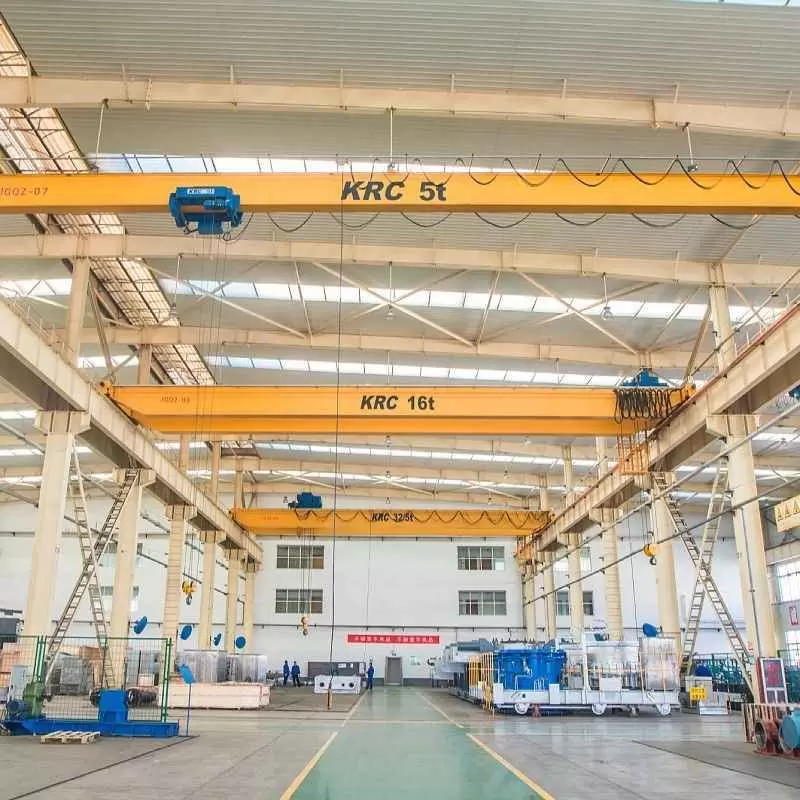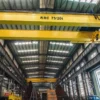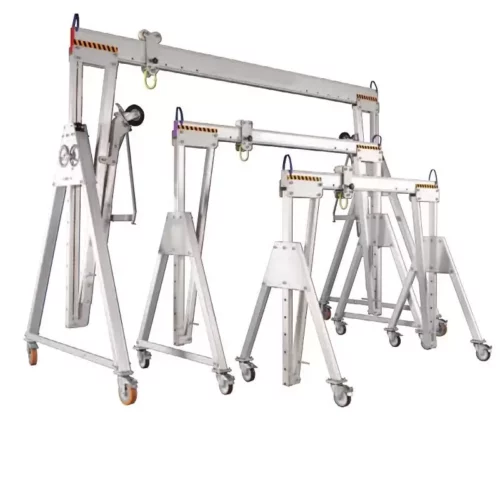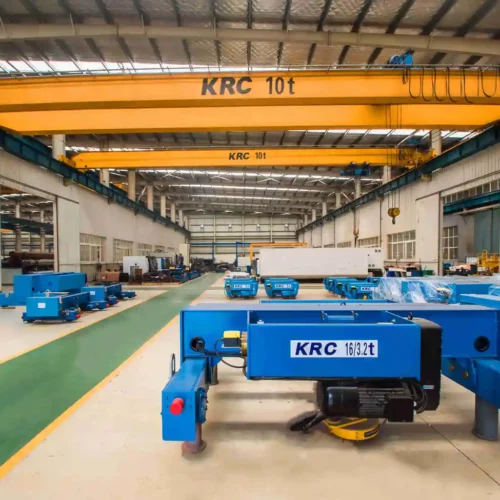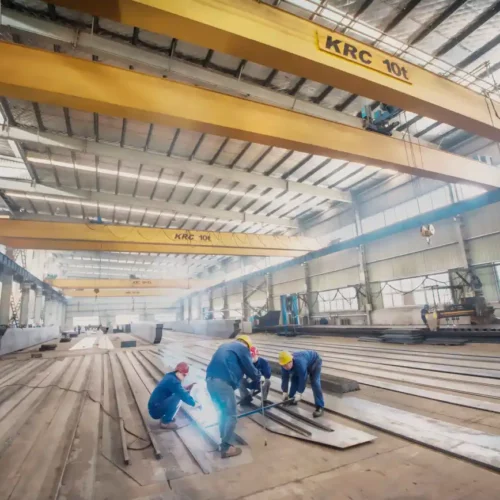single girder gantry crane Safety Certifications
Single girder gantry cranes play a crucial role in material handling across various industries. Ensuring their safety and operational integrity is paramount. Below are key safety certifications and standards that these cranes should meet:
1. OSHA (Occupational Safety and Health Administration): OSHA sets safety guidelines for workplaces in the U.S. Compliance ensures that gantry cranes meet essential safety and health criteria.
2. ASME B30.16 and B30.17: These standards by the American Society of Mechanical Engineers cover overhead hoists and cranes. Adherence ensures the equipment meets rigorous safety and operational guidelines.
3. IEC 60204-32 (International Electrotechnical Commission): This standard pertains to electrical safety requirements for lifting machines, including gantry cranes. It ensures electrical safety in hardware and operational software.
4. ISO 9001 (International Organization for Standardization): While not crane-specific, ISO 9001 certification for manufacturers ensures that the crane is produced under a rigorous quality management system.
5. ANSI (American National Standards Institute): Various ANSI standards apply to cranes, ensuring they meet safety, design, and operational criteria.
6. FEM (Fédération Européenne de la Manutention): In Europe, FEM standards are critical for ensuring industrial and manufacturing cranes meet safety and performance measures.
7. CSA (Canadian Standards Association): In Canada, adherence to CSA standards ensures that gantry cranes comply with national safety and performance requirements.
8. CE Marking: For cranes used in the European Economic Area, CE marking indicates compliance with essential health, safety, and environmental protection standards.
These certifications and standards are crucial for ensuring that single girder gantry cranes operate safely, reliably, and efficiently. Regular inspections and maintenance in line with these standards are also imperative for ongoing safety and performance.
List Reference Technical Parameters of “single girder gantry crane”
A single girder gantry crane is a type of overhead crane with a single bridge beam supported by two A-frame steel legs, which move on a fixed runway or track. Below are the reference technical parameters typically associated with single girder gantry cranes:
1. Lifting Capacity: The maximum weight the crane can lift, usually ranging from 1 ton to 20 tons.
2. Span Length: The horizontal distance covered by the crane, typically between 5 meters to 35 meters.
3. Lifting Height: The maximum height the hook can reach, often between 6 meters to 18 meters.
4. Crane Speed: The speed at which the crane moves along the runway or track. This can range from 20 meters per minute to 40 meters per minute.
5. Trolley Speed: The speed at which the trolley (which houses the hoist) moves along the bridge girder, generally ranging from 10 meters per minute to 20 meters per minute.
6. Hoisting Speed: The speed at which the load is lifted or lowered, typically between 3 meters per minute to 8 meters per minute.
7. Power Supply: The type of electrical power the crane uses, commonly 3-phase AC, 380V, 50Hz or 60Hz.
8. Control Method: Options include pendant control, remote control, and cabin control.
9. Working Duty (Duty Cycle): Defined by a classification system (e.g., ISO, FEM) and varies according to load and use frequency (e.g., ISO M3/M4/M5, FEM 1Am/2m/3m).
10. Rail Gauge: The distance between the rails on which the crane travels, which is usually adjustable within a specified range.
11. Motor Type: Generally, a squirrel-cage motor or slip-ring motor, chosen based on performance requirements.
12. Environmental Conditions: Includes operating temperature range (-20°C to +40°C), humidity levels, and indoor or outdoor use.
13. Safety Features: Overload protection, emergency stop buttons, limit switches for lifting and traveling, and anti-collision devices.
These parameters help in configuring the crane for specific applications, ensuring it meets the operational requirements and safety standards.
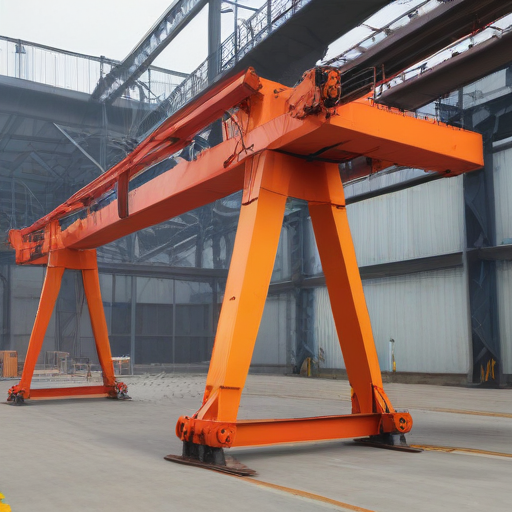
List Product features of “single girder gantry crane”
Sure, here are the key product features of a single girder gantry crane within 300 words:
1. Design and Structure:
– Single Girder: Features one main horizontal beam (girder) supported by legs.
– Lightweight Construction: Generally lighter and less bulky compared to double girder versions.
– Versatile Configurations: Available in various configurations, such as mobile, fixed, or adjustable height.
2. Capacity and Span:
– Load Capacity: Typically supports light to moderate loads, ranging from a few tons up to 20 tons.
– Span Length: Customizable span lengths to match specific site requirements, generally extending up to 30 meters.
3. Mobility:
– Rail-Mounted or Rubber-Tired: Options for rail-mounted for fixed pathways or rubber-tired for flexible movement.
– Manual or Powered Movement: Can be manually moved or mechanically powered for ease of handling.
4. Ease of Installation:
– Minimal Structural Support: Requires minimal foundation work compared to overhead cranes, simplifying installation.
– Quick Setup: Suitable for rapid deployment in temporary or semi-permanent applications.
5. Operational Efficiency:
– User-Friendly Controls: Equipped with intuitive control systems, including wireless remote options.
– Precision Handling: Offers precise load positioning with smooth start and stop functions.
– Energy Efficiency: Designed to minimize power consumption.
6. Safety Features:
– Load Limiting: Integrated load limiters to prevent overloading.
– Emergency Stops: Equipped with emergency stop buttons and warning lights.
– Anti-Collision Systems: Advanced anti-collision systems to enhance operational safety.
7. Durability and Maintenance:
– High-Quality Materials: Constructed from robust, corrosion-resistant materials for extended longevity.
– Low Maintenance: Generally requires less maintenance compared to more complex crane types.
8. Customization:
– Tailored Designs: Can be customized to fit specific operational needs and workspace constraints.
– Multiple Accessories: Available with various attachments and accessories like hooks, grabs, and spreader beams.
This concise overview covers the essential features, highlighting the versatility, efficiency, and practical benefits of single girder gantry cranes.
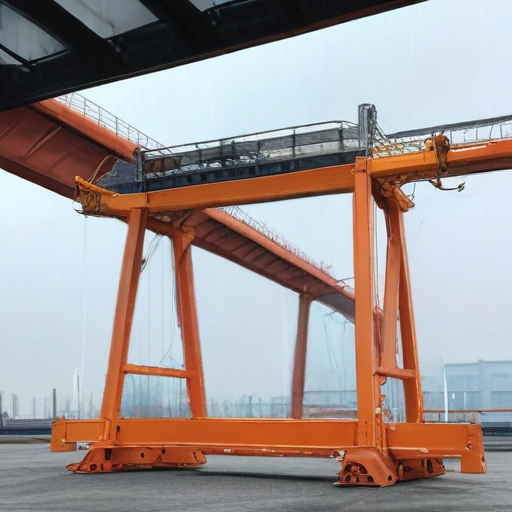
List Various Types of “single girder gantry crane”
Certainly! Single girder gantry cranes are versatile lifting machines commonly used in various industrial settings. Here are the different types:
1. Portable/Mobile Gantry Cranes:
– Application: Lightweight, easy to move, ideal for small to medium lifting tasks.
– Features: Adjustable height and span, typically equipped with castors for mobility.
2. Fixed Height Gantry Cranes:
– Application: Used in environments where the height requirement remains constant.
– Features: Permanent height, stable structure, often used in production lines and warehouses.
3. Adjustable Height Gantry Cranes:
– Application: Adaptable for different lifting heights and environments.
– Features: Manually or electrically adjustable height, suitable for varied tasks.
4. Semi-Gantry Cranes:
– Application: Used where space is a constraint; one side runs on a rail while the other side uses end trucks.
– Features: Partial gantry structure allows efficient use of space.
5. Track-Mounted Gantry Cranes:
– Application: Installed in workshops or production areas with long travel requirements.
– Features: Runs on tracks, offers precise movement and higher capacity.
6. Cantilever Gantry Cranes:
– Application: Ideal for working close to buildings or other obstructions.
– Features: The beam extends beyond the supporting legs, allowing overhanging loads.
7. Custom Gantry Cranes:
– Application: Tailor-made for specific industry needs, including aerospace, shipyards, and construction.
– Features: Designed according to precise requirements, including size, loading capacity, and specific work conditions.
8. Aluminum Gantry Cranes:
– Application: Often used in clean rooms, pharmaceuticals, and other industries requiring non-corrosive materials.
– Features: Lightweight, corrosion-resistant, portable with a simple setup.
Each type meets specific application needs, balancing versatility, portability, and lifting capacity.
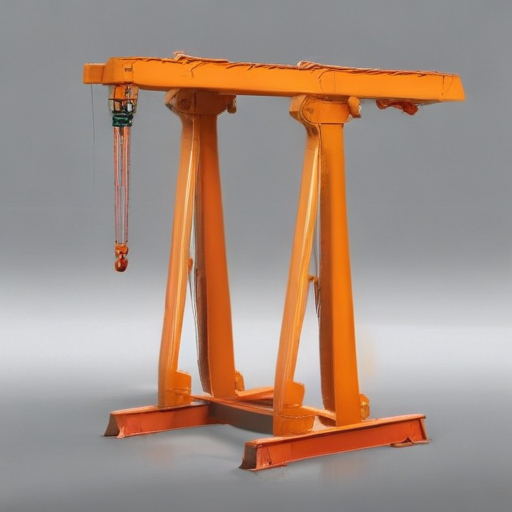
List Application of “single girder gantry crane”
Single girder gantry cranes are versatile lifting solutions widely utilized across various industries due to their efficiency, cost-effectiveness, and ease of installation. Below are some key applications:
1. Manufacturing and Assembly Lines: In factories, these cranes handle heavy components, enabling smooth assembly processes. They’re crucial in automotive, aerospace, and machinery production for the precise and safe movement of parts.
2. Warehousing and Logistics: For loading and unloading materials, single girder gantry cranes are indispensable in warehouses and distribution centers. They facilitate the swift movement of goods, enhancing operational efficiency.
3. Construction Sites: On construction sites, these cranes lift and position heavy materials such as steel beams and concrete blocks. They are integral to infrastructure projects, aiding in the assembly of structures and bridges.
4. Shipyards and Ports: Handling large cargo and containers is a primary function at docks and shipyards. These cranes ensure the efficient transfer of goods between ships and the shore, supporting maritime logistics.
5. Maintenance Facilities: Industries like mining and utilities use these cranes for equipment maintenance and repair tasks. They provide the necessary lifting power to move heavy machinery and parts.
6. Steel Mills and Metal Fabrication: In these settings, gantry cranes transport raw materials and finished products. They support processes such as cutting, bending, and welding by moving large metal sheets and components.
7. Railway Yards: These cranes are used for loading and unloading cargo from railway cars, facilitating rail freight operations. They help in the efficient handling of bulky items and heavy materials.
8. Storage Yards: Outdoor environments such as lumber yards and stone quarries benefit from gantry cranes for moving and organizing heavy materials and products.
Single girder gantry cranes enhance productivity, improve safety, and reduce labor costs across these varied applications, making them a critical asset in numerous industrial and commercial operations.
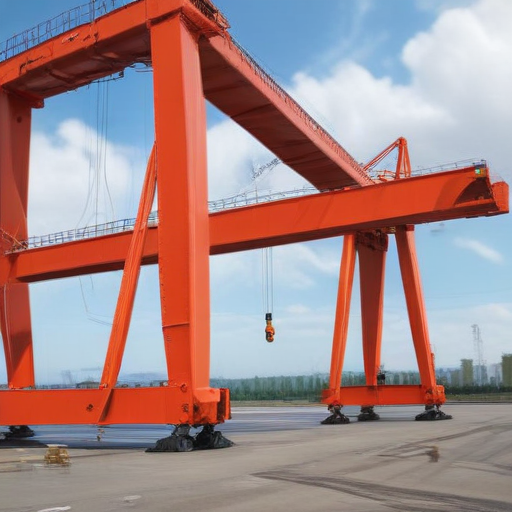
List Buyer Types of “single girder gantry crane”
Buyer types for single girder gantry cranes vary widely across different industries and operational needs. Here are the primary categories:
1. Construction Companies
Construction firms use single girder gantry cranes for moving heavy materials like steel beams, concrete blocks, and prefabricated components at construction sites. Their need also extends to setting up and dismantling temporary structures.
2. Manufacturing Plants
These facilities employ gantry cranes for transporting raw materials, assembly components, and finished products. Industries like automotive, aerospace, and heavy machinery stand out as key users.
3. Warehousing and Logistics
Warehouses utilize these cranes for efficient loading and unloading of goods from trucks and containers, as well as for internal material handling tasks.
4. Shipyards and Ports
Port authorities and shipbuilding companies use single girder gantry cranes for lifting and moving heavy cargo and ship components. This helps in the loading and unloading of shipping containers and marine construction tasks.
5. Railway Maintenance
Railways require gantry cranes for track maintenance, handling rails, ties, and other heavy components. They also facilitate the construction and repair of rail infrastructure.
6. Mining Operations
Mining industry uses gantry cranes for the heavy lifting and transportation of extracted ore, machinery, and other materials within the mining site.
7. Wind and Renewable Energy Sector
This sector employs gantry cranes for installing and maintaining wind turbines, including handling large components like turbine blades and nacelles.
8. Utility Companies
Utilities, including water treatment and power generation plants, utilize gantry cranes for equipment maintenance, repairs, and material handling tasks within their facilities.
9. Recycling and Waste Management
Recycling plants leverage these cranes for handling bulky recyclable materials, from scrap metal to large containers, aiding in efficient waste management processes.
10. Automotive Repair Shops
Heavy-duty automotive repair shops use single girder gantry cranes for lifting engines, car bodies, and other automotive parts, facilitating easier and safer repairs.
Conclusion
Single girder gantry cranes are versatile and essential across various industries due to their cost-effectiveness, reliability, and ability to handle heavy loads efficiently. Each buyer type leverages the crane’s unique features to meet specific operational needs.
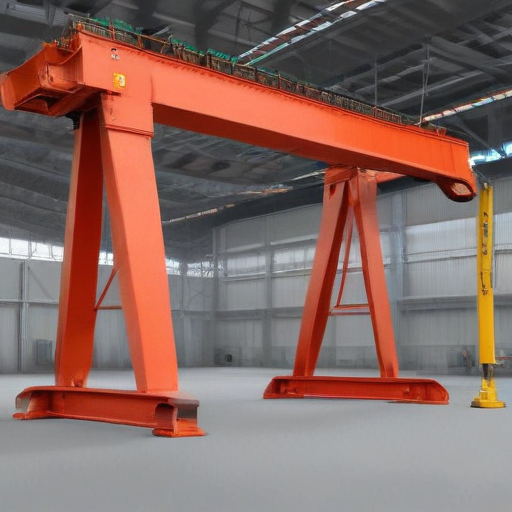
List “single girder gantry crane” Project Types for Different Industries
Single girder gantry cranes are versatile lifting solutions valuable across various industries owing to their efficient design and cost-effectiveness. Here are project types across different industries where these cranes are commonly utilized:
1. Manufacturing Industry:
– Assembly Lines: For lifting and moving parts between workstations.
– Warehouse Handling: Loading and unloading materials in storage areas.
2. Construction Industry:
– Building Sites: Transportation of construction materials like steel beams, concrete blocks, etc.
– Precast Concrete Plants: Handling and moving precast components.
3. Metal Fabrication Industry:
– Workshops: Lifting heavy metal sheets and components for cutting, welding, and drilling processes.
– Storage Lots: Moving finished metal products to storage or shipping areas.
4. Transportation and Logistics:
– Rail Yards: Loading and unloading cargo from trains.
– Freight Terminals: Handling containers and heavy cargo efficiently.
5. Automotive Industry:
– Parts Manufacturing: Transporting automotive parts between different manufacturing stages.
– Assembly Lines: Assisting in assembly processes with heavy components.
6. Mining Industry:
– Material Handling: Moving heavy mining equipment and raw materials.
– Maintenance Workshops: Assisting in equipment repairs and maintenance.
7. Shipbuilding Industry:
– Shipyards: Moving large sections of ships during the assembly process.
– Dockyards: Handling cargo and ship parts for maintenance and repair operations.
8. Power Plants:
– Maintenance: Lifting and positioning heavy machinery and plant components.
– Equipment Handling: Moving replacement parts and tools.
9. Chemical and Petrochemical Industries:
– Plant Operation: Transporting heavy chemical containers and equipment.
– Storage Facilities: Loading and unloading drums and tanks.
10. Aerospace Industry:
– Component Assembly: Precise handling of aircraft parts and frames.
– Maintenance Hubs: Assisting in the maintenance of aircraft with substantial components.
Single girder gantry cranes provide practicality and efficiency across these diverse applications, making them an essential asset in many industrial sectors.
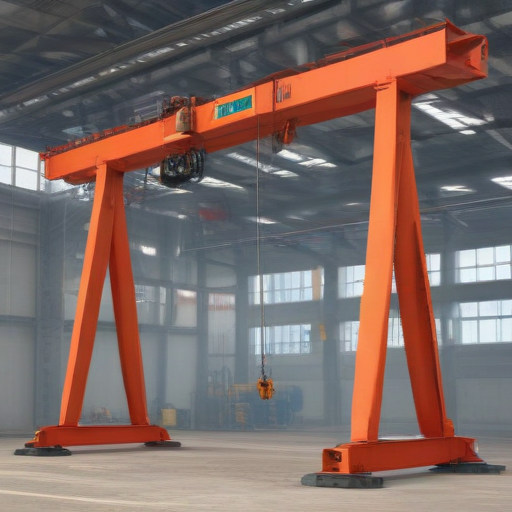
single girder gantry crane Accessories Upgrades and Custom Manufacturing Options
A single girder gantry crane is a versatile and efficient material handling solution commonly used in various industries. To enhance its functionality and tailor it to specific operational needs, several accessories, upgrades, and custom manufacturing options are available.
1. Accessories:
– Remote Controls: Offering wireless operation, remote controls enhance safety and convenience by allowing operators to control the crane from a distance.
– Load Cells: Integrated load cells provide real-time load monitoring, ensuring safe and optimal lifting operations.
– Limit Switches: Installed at various points, limit switches prevent the crane from moving beyond set areas, enhancing safety.
– Lighting Systems: LED lighting systems increase visibility in low-light environments, improving safety and efficiency.
– Spreader Beams: These are used to distribute the load of large or flexible objects, ensuring safe and balanced lifting.
2. Upgrades:
– VFD Drives (Variable Frequency Drives): These allow for smoother starts and stops, reducing wear and tear on the crane and improving load control.
– Anti-Sway Systems: Advanced anti-sway technology minimizes load swing, enhancing precision and safety during operations.
– Weatherproofing: For outdoor use, weatherproofing upgrades protect the crane from harsh environmental conditions, extending its lifespan.
– Automation Integration: Advanced automation systems can be incorporated, allowing for semi-automated or fully automated crane operations.
3. Custom Manufacturing Options:
– Tailored Span and Height: Customizing the span and height of the gantry crane ensures it fits perfectly within the operational space, optimizing functionality.
– Specialized End Trucks: Custom end trucks can be designed to suit specific rail or track systems.
– Unique Trolley Designs: Specialized trolleys can be manufactured to accommodate unusual load shapes or weights.
– Custom Paint and Coatings: Tailored paint and coatings not only meet aesthetic requirements but also provide additional protection against corrosion or chemicals.
These customizations and enhancements can transform a standard single girder gantry crane into a bespoke, efficient, and safer lifting solution, perfectly aligned with specific industry needs.
List Quality Control and The Manufacturing Process of “single girder gantry crane”
Quality Control
1. Incoming Material Inspection: Raw materials such as steel beams and electrical components are inspected for physical defects and compliance with specifications.
2. Welding Quality: Weld joints are checked using non-destructive testing methods like ultrasonic testing to ensure structural integrity.
3. Dimensional Accuracy: Measurements are taken to ensure that all components meet design specifications and tolerances.
4. Load Testing: Prototypes and completed cranes undergo load testing to verify they can handle rated capacities safely.
5. Electrical Inspection: Electrical systems are tested for continuity, insulation, and functionality to ensure safety and reliability.
6. Surface Treatment: Coatings and paints are inspected for uniform application and adherence to corrosion protection standards.
7. Final Inspection: A comprehensive inspection covering all mechanical, structural, and electrical aspects is conducted before delivery.
Manufacturing Process
1. Design & Engineering: CAD software is used to create detailed drawings and specifications. Engineering analysis ensures the design meets regulatory and performance standards.
2. Material Procurement: High-strength steel, motors, and other components are sourced from reputable suppliers based on the design requirements.
3. Cutting & Shaping: Steel sections are cut to required dimensions using CNC machines or plasma cutting technology. Precision shaping ensures parts fit together correctly.
4. Welding & Assembly: Components are welded and assembled using jigs and fixtures to maintain alignment. Robots or skilled welders perform welds based on standardized procedures.
5. Machining: Machining operations add precision holes, threads, or other features to components, using lathes, milling machines, and drill presses.
6. Surface Treatment: Components undergo shot blasting, galvanizing, and painting to enhance durability and resistance to corrosion.
7. Electrical Wiring: Electrical systems, including motors, control panels, and limit switches, are installed by qualified electricians following safety standards.
8. Assembly & Integration: All components are assembled into the final crane structure. Multiple checks ensure proper alignment and functionality.
9. Testing: The assembled crane undergoes rigorous testing, including load and cycle tests, to verify performance under operational conditions.
10. Packaging & Delivery: Final products are securely packaged to prevent damage during transportation and shipped to the customer or installation site.
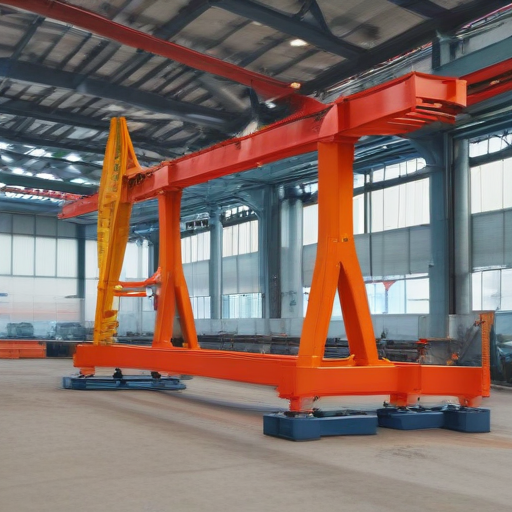
How to use “single girder gantry crane”
A single girder gantry crane is a type of overhead crane that consists of a single horizontal beam (girder) supported by legs that move on wheels or rails. Here’s a brief guide on how to use it:
1. Pre-Operation Checks:
– Inspect the Crane: Check the crane for any signs of wear, damage, or malfunction. Pay close attention to the hoist, controls, and moving parts.
– Check the Load: Ensure the load is within the crane’s lifting capacity. Verify the weight and balance of the load.
2. Positioning:
– Align the Crane: Move the crane to the desired position above the load. Use the controls to ensure smooth movement.
3. Lifting the Load:
– Attach the Load: Securely attach the lifting device (hooks, slings, etc.) to the load.
– Lift Gradually: Slowly lift the load a few inches to ensure it is secure and balanced.
– Hoist: Once verified, continue to hoist the load to the desired height.
4. Moving the Load:
– Horizontal Movement: Use the controls to move the crane horizontally along the rails or wheels to position the load where needed.
– Monitor: Always keep an eye on the load and crane to avoid any obstacles or hazards.
5. Lowering the Load:
– Position Accurately: Move the load to the exact spot where it needs to be placed.
– Lower Gently: Slowly lower the load, ensuring it is stable and positioned correctly.
6. Post-Operation Steps:
– Secure the Crane: Turn off the power and secure the crane to prevent unauthorized use.
– Inspect Again: Conduct a quick inspection to ensure no damage occurred during operation.
Safety Tips:
– Training: Only trained and authorized personnel should operate the crane.
– Stay Clear: Ensure that all personnel are clear of the load during movement.
– Emergency Readiness: Know the locations of emergency stop buttons and procedures.
Following these steps will help ensure safe and efficient operation of a single girder gantry crane.
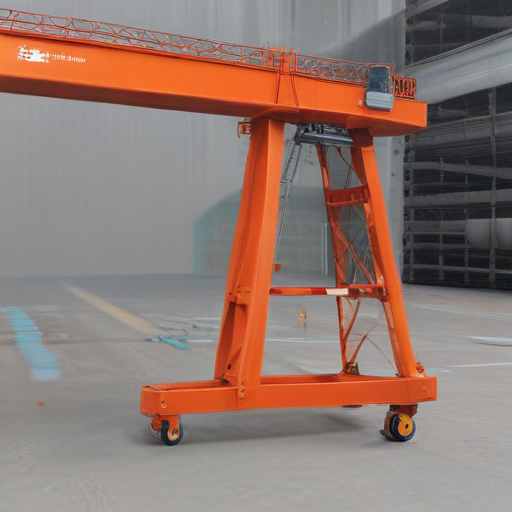
“single girder gantry crane” Comparative Analysis
A single girder gantry crane is a highly efficient lifting solution prominent in various industrial applications. In this comparative analysis, we contrast single girder gantry cranes with their double girder counterparts and other lifting mechanisms like jib cranes and overhead cranes.
Design and Structure
Single girder gantry cranes consist of a single horizontal beam (‘girder’) supported by two legs. These cranes can be more lightweight and require less material to construct compared to double girder gantry cranes, which use two girders. This design results in lower initial costs and easier installation.
Load Capacity and Span
However, single girder gantry cranes typically have lower load capacities compared to double girder versions. They are well-suited for light to moderate lifting tasks (up to 20 tons), whereas double girder gantry cranes handle heavier loads (over 20 tons). The span and height of single girder cranes are also generally smaller, making them ideal for workshops and small-to-medium scale outdoor projects.
Versatility and Flexibility
Single girder gantry cranes are more versatile and flexible compared to fixed systems like jib cranes, as they can move along a floor rail system for extended coverage areas. Overhead cranes, while offering high load capacity and span, require substantial infrastructure investment and are less flexible in terms of relocation.
Installation and Maintenance
The installation and maintenance of single girder gantry cranes are simpler and less costly. Overhead cranes involve complex ceiling or rooftop structures, whereas the floor-mounted design of gantry cranes simplifies setup. Additionally, the relatively uncomplicated mechanics translate to lower long-term maintenance expenses.
Cost-Effectiveness
Single girder gantry cranes provide a cost-effective solution for many lifting applications. They offer a balanced trade-off between capability, flexibility, and expense. Ultimately, the choice between single and double girder systems, or other lifting apparatuses, depends on the specific load requirements, spatial constraints, and budgetary considerations of the application.
In summary, single girder gantry cranes are an optimal choice for moderate lifting tasks, offering flexibility, reduced setup time, and cost benefits, though they are limited in load capacity and span compared to more robust options.
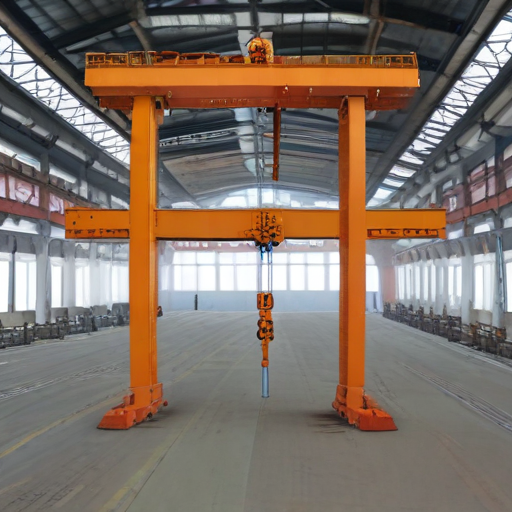
“single girder gantry crane” Warranty and Support
Warranty and Support for Single Girder Gantry Cranes
Warranty:
Purchasing a single girder gantry crane from us ensures you are covered by a comprehensive warranty. Our standard warranty period is 12 months from the date of installation or 18 months from the date of dispatch, whichever comes first. This warranty covers all parts and labor associated with rectifying any manufacturing defects or faults arising under normal operational conditions. We also provide an extended warranty option for an additional fee, offering further peace of mind. Please note that the warranty does not cover damages resulting from misuse, improper installation, or lack of maintenance.
Support:
Our dedicated support team is committed to providing top-tier assistance throughout the lifecycle of your crane. We offer the following support services:
1. Technical Assistance: Our experts are available 24/7 to address any operational issues, troubleshoot problems, and provide guidance on optimal usage.
2. Installation Support: Professional installation services to ensure your crane meets all operational standards and safety regulations.
3. Maintenance Services: Regular on-site inspections and maintenance packages tailored to extend the life of your crane. We recommend scheduled maintenance checks every 6 months to ensure peak performance.
4. Spare Parts Availability: Rapid access to genuine spare parts to minimize downtime. Our inventory is stocked to provide quick replacements for most components, ensuring minimal operational disruption.
5. Training Programs: Comprehensive training for your operational staff to ensure proficient and safe crane usage. Training sessions cover routine operations, maintenance, and emergency procedures.
6. Online Resources: Access to manuals, troubleshooting guides, and other critical documentation through our customer portal.
Your satisfaction is our priority, and we strive to support you with prompt, reliable, and professional service to ensure your single girder gantry crane operates efficiently and safely.
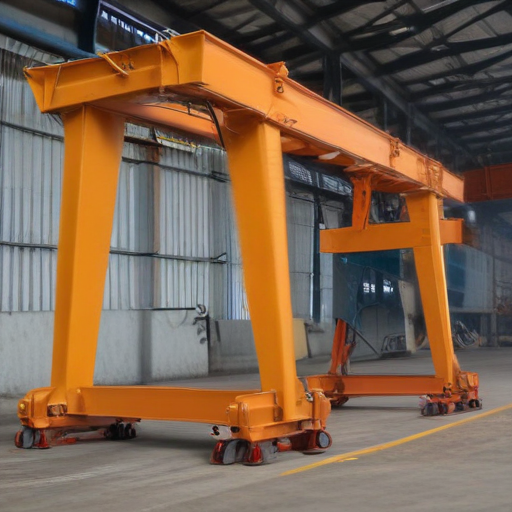
List “single girder gantry crane” FAQ
Certainly! Below are some frequently asked questions (FAQ) about single girder gantry cranes:
Single Girder Gantry Crane FAQ
#### 1. What is a Single Girder Gantry Crane?
A single girder gantry crane is a type of overhead crane that features a single horizontal beam (girder) supported by freestanding legs that move on wheels or tracks, typically used for loading, unloading, and moving materials in various industrial settings.
#### 2. What are the primary applications?
They are commonly used in warehouses, manufacturing facilities, shipyards, and construction sites for lifting and moving heavy loads efficiently.
#### 3. How is it different from a double girder gantry crane?
A single girder gantry crane has a single beam for supporting the load, which is generally lighter and less expensive compared to the double girder variant, which has two beams and can handle heavier loads and greater spans.
#### 4. What are the lifting capacities?
The lifting capacity typically ranges from 1 to 20 tons, but custom configurations can handle more depending on specific operational requirements.
#### 5. How is the crane operated?
Single girder gantry cranes can be operated manually, via pendant controls, wireless remote controls, or an operator cabin depending on the complexity and size of the crane system.
#### 6. What power sources are used?
These cranes usually operate on electric power, but some smaller or specialized versions may use pneumatic or hydraulic systems.
#### 7. What safety features are included?
Common safety features include overload protection, emergency stop functions, limit switches, and anti-collision systems to ensure safe operations.
#### 8. How much space do they require?
Space requirements vary by crane size, but generally, single girder gantry cranes require less structural support and space compared to other types of cranes, making them suitable for both indoor and outdoor applications.
#### 9. What maintenance is required?
Regular inspections, lubrication of moving parts, checking electrical connections, and ensuring proper alignment are necessary to maintain optimal performance and safety.
#### 10. Can it be customized?
Yes, single girder gantry cranes can be customized to meet specific operational needs, including varying spans, lifting capacities, and special attachments or hoists.
These FAQs cover the basics about single girder gantry cranes, providing a quick and comprehensive overview.
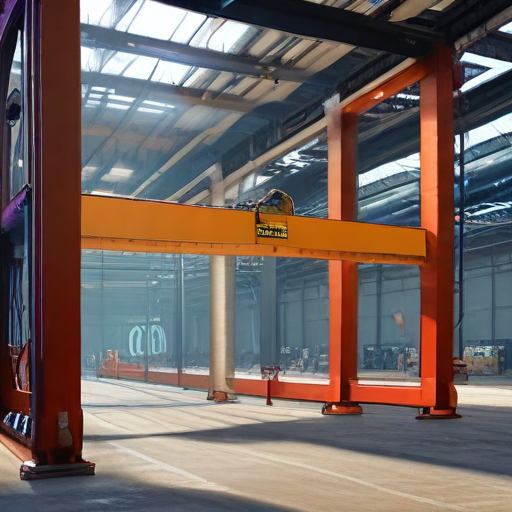
Top 10 FAQ with answer about single girder gantry crane for Buyer Sourcing from China
Certainly! Here are the top 10 frequently asked questions (FAQs) about sourcing single girder gantry cranes from China, along with concise answers:
1. What is a Single Girder Gantry Crane?
– A single girder gantry crane has one main beam supported by two legs and runs on tracks. It’s used for lifting medium-to-heavy loads.
2. What are the Benefits of Sourcing from China?
– Competitive pricing, a wide range of options, advanced manufacturing capabilities, and rapid production times.
3. What Factors Should I Consider When Choosing a Supplier?
– Quality certifications (ISO, CE), customer reviews, after-sales service, customization options, and compliance with international standards.
4. What Load Capacities and Span Options are Available?
– Load capacities typically range from 1 to 20 tons, with spans from 5 to 30 meters. Custom specifications are available upon request.
5. How Long Does Manufacturing and Shipping Take?
– Manufacturing typically takes 3-8 weeks depending on specifications. Shipping usually takes another 2-6 weeks.
6. What Information Should I Provide for a Quote?
– Load capacity, span, lifting height, power requirements, and any special features or environmental conditions.
7. Are Chinese Cranes Compliant with International Standards?
– Reputable manufacturers comply with global standards like ISO, EN, and DIN. Always verify certifications.
8. What are the Payment Terms?
– Common terms include T/T (Telegraphic Transfer), L/C (Letter of Credit), and sometimes trade assurance or escrow services for security.
9. What Types of Warranties and After-Sales Services are Offered?
– Typically, a 1-year warranty is standard. After-sales services may include installation guidance, spare parts supply, and technical support.
10. How Can I Ensure the Quality of the Gantry Crane?
– Conduct factory audits, request pre-shipment inspections, review test certificates, and consider third-party inspection services.
By addressing these FAQs, buyers can make more informed decisions when sourcing single girder gantry cranes from China.

